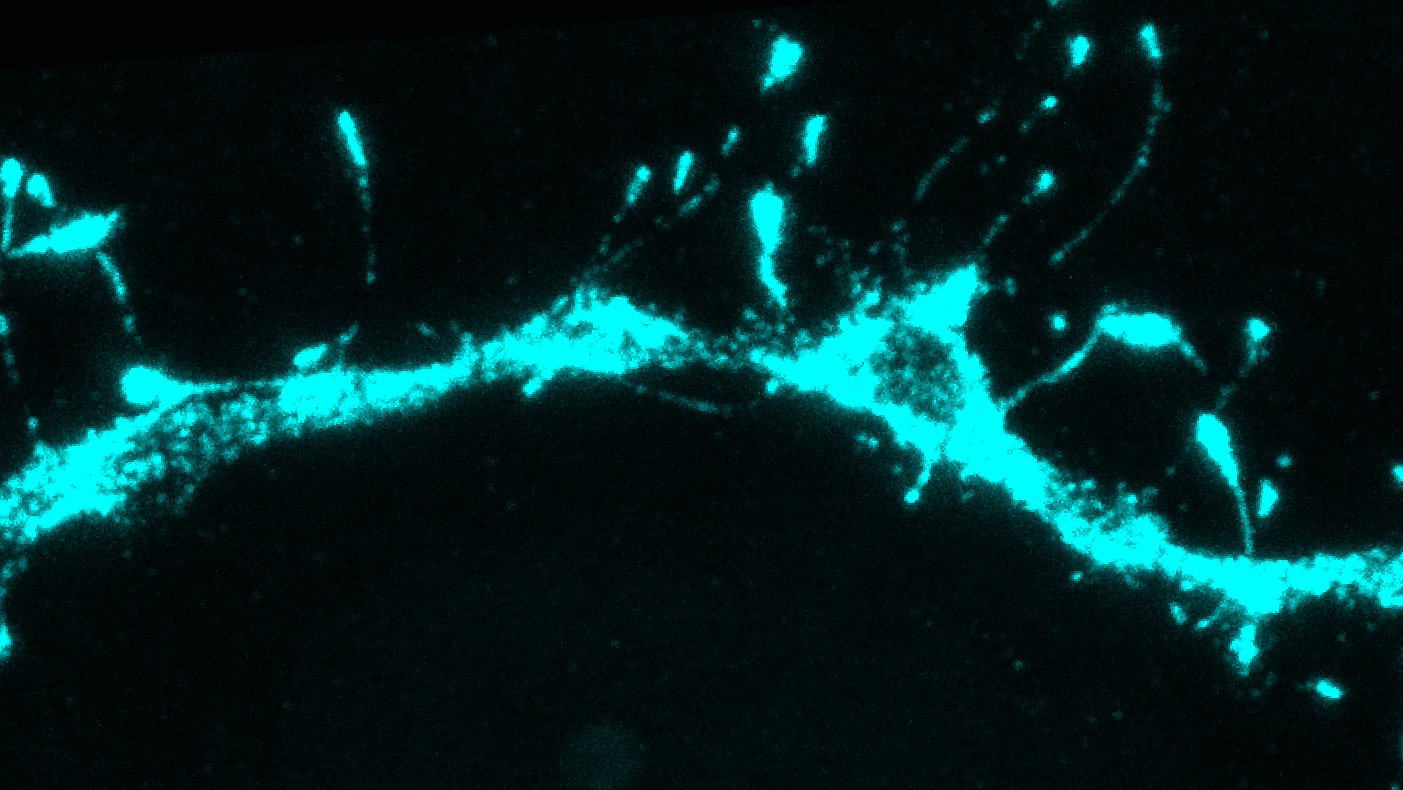How brains keep learning
The key may be that immature neural connections persist in adults, making it possible to form new memories and absorb new information.

MIT neuroscientists have discovered that the brains of adult mice contain millions of “silent synapses”—connections between neurons that remain inactive until they’re recruited to help form new memories.
Until now, it was believed that silent synapses were present only during early development. However, the new study revealed that in adult mice, about 30% of all synapses in the cortex are silent. This may help explain how the adult brain is able to continually learn and form memories without overwriting older information.
The team had not set out specifically to look for silent synapses. But while using a very high-resolution imaging technique to investigate a different question, they were surprised to notice an abundance of filopodia—thin membrane protrusions from neurons, so tiny that they are difficult to see using traditional techniques. They went on to find filopodia in the mouse visual cortex and other parts of the brain, at a level 10 times higher than previously seen. They also found that filopodia had only one of the two types of receptors found in a typical active synapse, both of which bind the neurotransmitter glutamate. Synapses without the second type of receptor are referred to as “silent” because they cannot pass along an electric current.
When they monitored the electrical activity generated at individual filopodia as they mimicked the release of glutamate from a neighboring neuron, the researchers found that glutamate would not generate an electrical signal in the filopodium receiving the input. This strongly suggests that the filopodia do represent silent synapses, they say.
The researchers also showed that they could “unsilence” these synapses by combining an electrical current coming from the body of the neuron with glutamate release from a neighboring one, and that doing this was much easier than altering mature synapses.
The findings support the theory proposed by other researchers that the adult brain includes highly plastic synapses, which can be recruited to form new memories, alongside synapses that remain more stable.
“This paper is, as far as I know, the first real evidence that this is how it actually works in a mammalian brain,” says senior author Mark Harnett, an associate professor of brain and cognitive sciences. “Filopodia allow a memory system to be both flexible and robust. You need flexibility to acquire new information, but you also need stability to retain the important information.”
The researchers are now looking for evidence of these silent synapses in humans. They also hope to study whether their number or function is affected by factors such as aging or neurodegenerative disease.
More MIT research at news.mit.edu
MIT researchers use quantum computing to observe entanglement - For the first time, researchers sent quantum information across a quantum system in what could be understood as traversing a wormhole.
An easier way to remove medical devices - New aluminum devices could be used as stents, staples, or drug depots and dissolved inside the body when no longer needed.
A step closer to smaller, lighter batteries - A discovery could remove an obstacle to developing solid-state lithium batteries, which would be more lightweight, compact, and safe.
The fastest laser link from space yet - Lincoln Lab’s TeraByte InfraRed Delivery system sent data from a satellite to Earth at 100 Gbps—a rate that will transform future science missions.
How touch dampens the brain’s response to painful stimuli - Rubbing an aching body part can bring some relief. Here’s why.
Zebrafish are smarter than we thought - Researchers have found that the brains of these simple fish can create 3D maps of their surroundings.
Large language models help decipher clinical notes - CSAIL researchers used deep learning to extract important data from electronic health records for better personalized care.
Not every reader’s struggle is the same - Children from both lower and higher socioeconomic backgrounds may struggle with reading, but their patterns of brain activity point to different types of trouble.
Keep Reading
Most Popular
Large language models can do jaw-dropping things. But nobody knows exactly why.
And that's a problem. Figuring it out is one of the biggest scientific puzzles of our time and a crucial step towards controlling more powerful future models.
How scientists traced a mysterious covid case back to six toilets
When wastewater surveillance turns into a hunt for a single infected individual, the ethics get tricky.
The problem with plug-in hybrids? Their drivers.
Plug-in hybrids are often sold as a transition to EVs, but new data from Europe shows we’re still underestimating the emissions they produce.
Google DeepMind’s new generative model makes Super Mario–like games from scratch
Genie learns how to control games by watching hours and hours of video. It could help train next-gen robots too.
Stay connected
Get the latest updates from
MIT Technology Review
Discover special offers, top stories, upcoming events, and more.